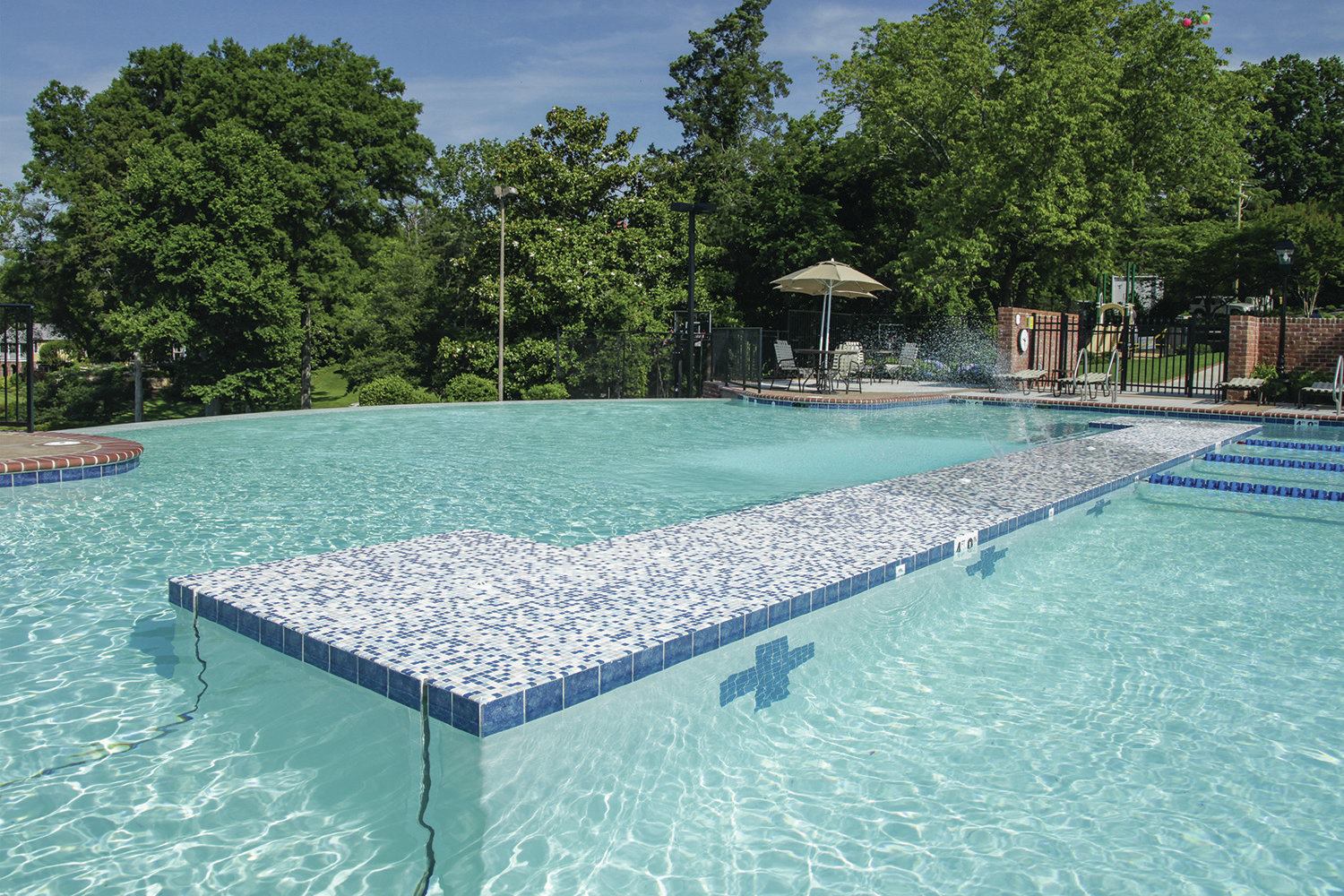By the time Mitchell Friedlander arrived, it was already too late. The hotel’s pool was barely 5 years old, but it looked as if it were on its last legs. It was leaking 4 inches of water per day. All the equipment had been fried, and the entire pool needed to be replastered and replumbed. Friedlander soon discovered why.
“They were putting trichlor tabs in the skimmer [instead of the erosion feeder where they belong],” says Friedlander, CEO of American Pool Enterprises, one of the nation’s largest pool management firms in Owings Mills, Md. “It was tearing up the equipment.”
It turned out, the hotel had hired a lifeguard management firm thinking that included water quality maintenance. “They actually thought the pool was being cared for,” Friedlander says.
Far from it. The final price tag for the all the repairs? Close to $20,000.
When it comes to the hotel, motel, apartment and condo aquatics market — commonly known as HMAC — Friedlander and others say stories like this are not unusual. He says lifeguard management is less expensive than full pool management, and many HMAC owners don’t understand the difference between the two. “Over and over again we’re seeing mismanagement because they’re bringing in someone that is just providing a lifeguard service,” Friedlander says. “These people need to educate themselves that it’s not all about final price.”
Trouble is, there’s often little else for HMAC pool owners to go on. Even though HMAC pools outnumber their traditional counterparts, they’re a blind spot to the industry and local governments. Most states don’t require certified operators or lifeguards. So there’s little industry involvement and little incentive for owners to get educated about pool management.
Meanwhile, the HMAC market continues to give aquatics a bad name. For instance, HMAC pools account for most of the aquatic violations and resulting recreational water illness outbreaks, according to the Centers for Disease Control and Prevention in Atlanta. It’s gotten so bad that the agency now recommends swimmers test the water themselves before jumping in.
New regulations, such as the Model Aquatic Health Code, may force HMAC owners to better maintain facilities. But those same regulations can be costly, causing owners to cut back on vital pool management. The real solution, say experts, is educating HMAC owners about the need for proper facility management — and tying it to their bottom line.
Driving the market
Doing so will be no small feat. Of the roughly 316,000 commercial pools in the United States, over 180,000 fall into the HMAC category, according to the 2013 U.S. Commercial Swimming Pool Market Report from P.K. Data. And that’s a conservative estimate. “Multifamily commercial pools have been rapidly increasing,” says Josh Darling, pool practice manager with P.K. Data in Atlanta. “We don’t feel the estimate we have reflects that increase.”
As the industry emerges from the economic downturn, Darling says the HMAC market is showing the first full signs of recovery. “Multifamily and lodging are really driving commercial construction right now,” he says.
Mike Fowler agrees. “We’ve seen an upturn based on sales in the last 18 months,” says Fowler, commercial sales and marketing manager for Pentair Commercial Aquatics in Sanford, N.C. “It trends back to those facilities.”
But paradoxically, another market driver may have contracted the HMAC market in the last several years, say Darling and Fowler. Case in point is the continued brisk sales for ADA-approved lifts. Fowler says many HMAC owners still have yet to comply with the complicated and oft-revised requirement. But Darling says a large, though unknown, number may have decided to close their pools rather than pay the costs. ADA requirements coming on the heels of VGBA only exacerbated that trend, Fowler says.
“That hit a lot of people hard,” Fowler says. “A lot of pools just closed down because they couldn’t afford to do it. It has shrunk the market.” As an example, he points to a recent industry event where a builder told of being hired to replace an apartment pool with a spraypad.
But even so, Darling says as homeownership rates fall — it’s at 66 percent now compared with 69 percent seven years ago — the HMAC market will continue to grow.
The iceberg effect
No matter what the future holds, today’s HMAC market is the proverbial iceberg of aquatics when it comes to illness and injury: Though mainly invisible, it’s where most of the damage occurs. In fact, approximately one out of every eight HMAC pools had to be closed immediately during routine health inspections, according to the latest CDC data. Compare that to waterparks, where only one in 16 had to be closed immediately.
The difference between those two markets highlights what’s wrong with the HMAC market, says Michelle Hlavsa, CDC’s Healthy Swimming Program chief. “It really underscores the importance of operator training,” Hlavsa says. “We look at these [HMAC pool] amenities like chocolates on the pillow, but don’t appreciate how complicated it is to run a pool. It’s a chemical reactor. It’s not something that just anyone off the street can do.”
And yet, that’s often exactly how HMAC pools are run, says Friedlander and others. Typically, maintenance falls to the head engineer, who’s also in charge of everything from keeping elevators running to keeping the lights on. In the best scenario, that person also is a trained operator. But that’s far from typical. Only 24 states and the District of Columbia currently require “verifiable” operator training, according to the National Swimming Pool Foundation. But even that often isn’t enough. Hlavsa says most RWI outbreaks happen on a weekend, when the most trained operator is not around, and housekeeping or office staff may be running the facility.
“Unfortunately, these bad pools give the industry a black eye,” she says. “There are a lot of good operators who do a lot of good work. But you always hear about the pool that had an outbreak.”
It’s not just RWIs that result from poor water quality maintenance, either. One of the biggest problems in the HMAC market is cloudy water, says Terry Arko, a recreational water specialist with SeaKlear in Bothell, Wash. He says cloudy water often can lead to drowning and accidents. In indoor environments, chloramines also can be a persistent issue. In both cases, proper care is part of the problem, but it’s not the only one.
HMAC pools often are much smaller than their counterparts. Fowler says they’re “not much more than a residential pool in a hotel setting.” But unlike residential pools, HMAC pool demand can be much higher. That’s where trouble arises. “Most pools … have basic, sometimes undersized, equipment that can’t keep up with an influx of swimmers,” Arko says.
But while water quality issues and RWIs impact the whole industry, it’s HMAC owners who end up being liable to those who get sickened or injured. Friedlander says that’s where they often regret cheaping out on a pool management firm, which typically includes liability insurance. HMAC owners would be wise to work with a company that carries at least $22 million in liability insurance, he adds. Some less costly firms only carry $2 million to $5 million. “Say you have a gas leak. It’s not one victim; it’s a cluster of victims,” he says. “Exposure is really high. We carry $22 million for a reason.”
Closing the training gap
Of course, a better approach is preventing such incidents in the first place. That’s where new regulations, such as the Model Aquatic Health Code, come in. Among its many recommendations, it would require verifiable operator training. “We’re asking operators to get trained, but we also have to look at the quality of that training and set minimum standards,” Hlavsa says.
But such requirements need to be enacted with caution, Fowler says. He agrees better operator training would be good for the industry, but worries such requirements might come too soon on the heels of VGBA and ADA. “A lot of things are coming up that are going to affect this industry,” he notes.
Even Hlavsa concedes that the best solution is helping HMAC owners see the connection between better facility maintenance and the bottom line.
“These issues aren’t good for business, and it’s certainly not good for public safety,” she says. “We definitely have a mutual interest here.”



